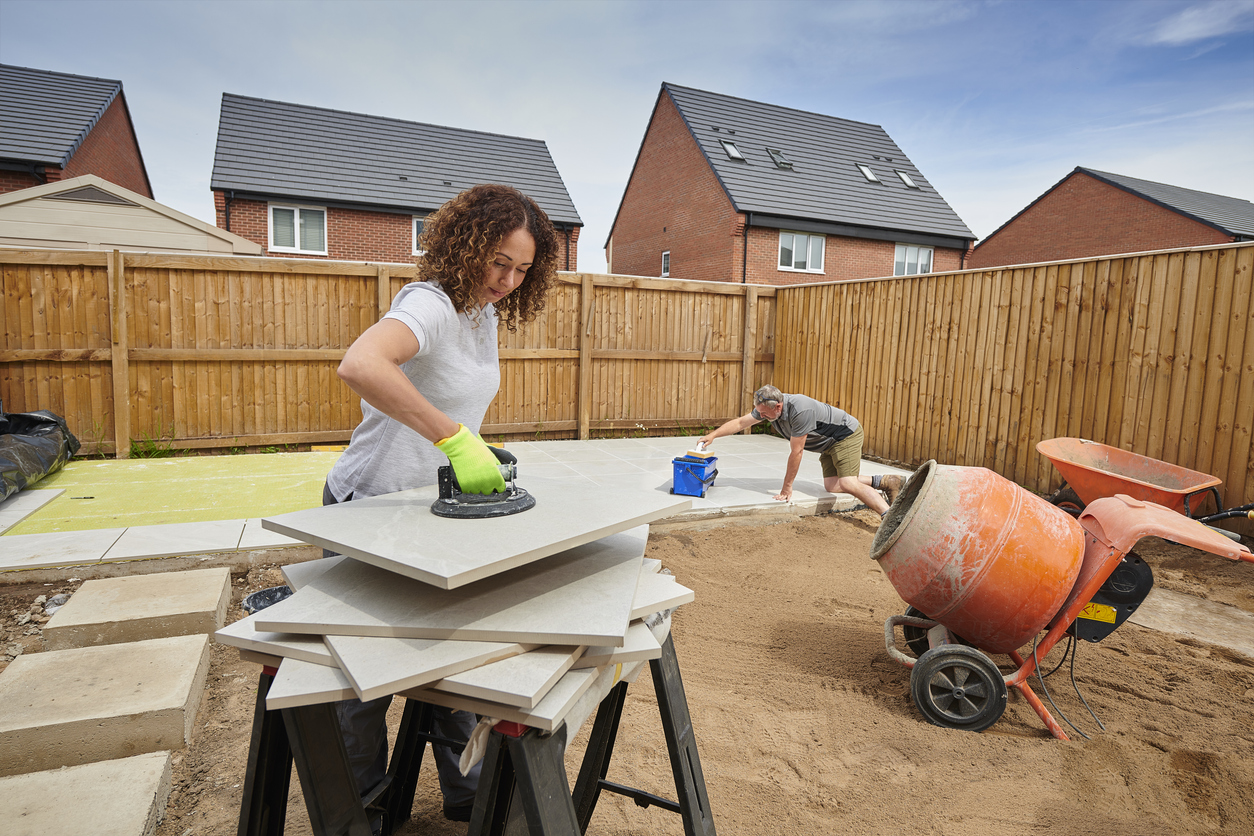
Key takeaways
-
Home maintenance projects protect your home’s existing structure and features, while home improvement projects create new features.
-
Your home’s health is reflected by its outward appearance. Even the appearance of neglect can reduce your home’s value.
-
Using funds from a home equity agreement to pay for home maintenance projects can be a great way to take care of needed home maintenance projects.
Like another piece of the landscape, your home changes with the seasons. Springtime typically brings renewal with warmer weather and fall begins the transition to longer periods spent indoors.
By following a seasonal approach, you can maintain your home without feeling overwhelmed. Taking care of the smaller tasks on a routine basis prevents larger issues from developing. Maintaining your home not only provides you with peace of mind but can also sustain – and even improve – your home’s value by slowing down depreciation.
The largest asset most Americans possess is their home. By using funds from a home equity agreement (HEA) to pay for home maintenance projects, you can use the equity already established in your home.
Benefits of Home Maintenance Projects
Performing home maintenance may seem like a daunting task. Whether you’re a new or established homeowner, the tasks can feel unending. Organizing your home maintenance to flow with the seasons distills your home maintenance to-do list into bite-sized chunks.
Before creating your checklist, consider the benefits of a regular home maintenance schedule.
-
Solve problems proactively to prevent future large-scale damage.
-
Extend the life of your home’s appliances and fixtures, including kitchen equipment, siding and roofing.
-
Potentially improve your home’s value by as much as 1% per year.
Setting an Annual Home Maintenance Schedule
Consider organizing your home maintenance plan to follow the seasons. This aligns your tasks with seasonal weather conditions, and with the stocking schedules of local home goods shops and stores. While your particular home maintenance project needs will vary based on your location, the following tips are adjustable to fit lifestyles and conditions. We also provide a rough estimate of the time and cost of each project.

1. Spring
When warmer weather rolls in, it’s time to give both your house and lawn some attention.
-
Perform a visual inspection. Check the foundation for any gaps, which you can fill with insulating foam spray or fiberglass insulation. This prevents damage from weather or small animals. Doing it yourself will likely take about half an hour and cost less than $10.
-
Clean the gutters. This facilitates rain drainage, and eliminates clogs caused by leaves or debris. It’s free if you take care of it yourself. If you hire someone, it will generally take about an hour of their time.
-
Clean the driveway and sidewalks. Rent a power washer and clean any mildew or other stains that have accumulated. Cost to rent should be less than $50 and take an hour to do.
-
Fertilize the lawn. A $30 bag of fertilizer should cover about 10,000 square feet. Plan on about 30 minutes, depending on the type of lawn you have.
-
Ventilate eaves. If you live in the north or Midwest, any ice that exists will dam between the roof and house come winter. When snow melts against this ice, it can ruin interior walls. Placing holes and vents in the eaves and roof’s peak will prevent this. Plan on about $1,000 for a contractor to take of this, and $250 for materials if you take care of it yourself.
-
Stain your deck. Apply a fresh coat of stain to weatherproof your deck and increase its visual appeal. The stain may be just around $25. Plan an hour or two for the work.
In addition to inspections and work outdoors, take care of the interior:
-
Replace air filters. Change the filter in your furnace and air conditioner. Filters could cost up to about $10 each. It’ll take only a few minutes to change.
-
Weatherize your pipes. For any water pipes prone to freezing in the winter, consider wrapping the pipes in heat tape early($30 to $50 for kit). However, heating tape is powered by electricity and needs to be plugged into an outlet. If there’s no power source at the pipes’ location (e.g., beneath a sink), you would need an entire electrical system installed, which could be cost-prohibitive.
-
Install cellular blinds in key windows. Thermal cellular blinds will keep help keep indoor air temps down in the summer and help retain heat in the winter. Depending on your budget, you may consider black-out shades as well. Either way, these updates will save on utility expenses and will often increase curb appeal. Depending on your choice and your window size, prices can start at $25 and go up from there. If you install yourself, it may take up to an hour per window.
2. Fall
As the days grow shorter and temperatures start to drop, it’s time to prepare your house for cooler weather. If you live in a more temperate climate, your fall to-do list may be shorter.
Prepare for the weather:
-
Tend to the windows. For drafty windows, consider purchasing a film window insulating kit. Check to make sure that the tape doesn’t damage paint (around $25 will buy enough to cover five or six windows). Determine whether installing double-pane windows would benefit your home. These often last up to 10 years, are sometimes eligible for tax credits, and can increase your home’s marketability.
-
Clean the gutters. Just like in spring, this is essential for preventing damage caused by ice or drainage.
-
Check the HVAC system. Nothing’s worse than turning your furnace on for a cold day and realizing it’s shot. Try it out while the weather is still warmer and give yourself enough time to arrange for servicing (or buy a replacement) if needed.
-
Blow out your sprinkler system. If you have a sprinkler system, prevent damage caused by bursting hoses or pipes due to ice. If your outside faucets are not self-draining, don’t forget to turn them off at the shutoff valve inside. If you need to contract this task out, it should be less than $50.
Use a HEA to Fund Home Maintenance Projects
Funding home maintenance projects doesn’t have to be difficult. While using a home equity loan or home equity line of credit may seem appealing, each requires you to put up your home as collateral. A third option is a home equity agreement.
Unlike other options, a HEA is not a loan. Instead, the HEA provider receives a percentage of your home’s future value in exchange for cash now. That means no monthly installment payments and no interest fees.
The amount you can receive depends on the amount of equity you’ve established in your home. Equity is the difference between what you owe and what you owe on your home. Once you receive HEA funds, you can use them any way you see fit – including to take care of important home maintenance projects.
A home equity agreement can be a great option if you need to invest in more costly home maintenance or improvement projects, too, such as siding, roofing, HVAC systems or structural repairs.
Use an HEA from Unlock Technologies to Complete Home Maintenance Projects
At Unlock Technologies, our experienced professionals can help you navigate the application process and take you from applicant to recipient of cash. Instead of taking on new debt, an Unlock Technologies HEA puts the equity you already have in your home to productive use.
Contact us today to get started.
The blog articles published by Unlock are available for informational purposes only and not considered legal or financial advice on any subject matter. The blogs should not be used as a substitute for legal or financial advice from a licensed attorney or finance professional. Links in our blogs to third-party websites are provided as a convenience and for informational purposes only; they do not constitute an endorsement of any products, services, or opinions of the corporation, organization, or individual. Unlock bears no responsibility for the accuracy, legality, or content of the external site or for that of subsequent links.
The blog articles published by Unlock Technologies are available for general informational purposes only. They are not legal or financial advice, and should not be used as a substitute for legal or financial advice from a licensed attorney, tax, or financial professional. Unlock does not endorse and is not responsible for any content, links, privacy policy, or security policy of any linked third-party websites.”


